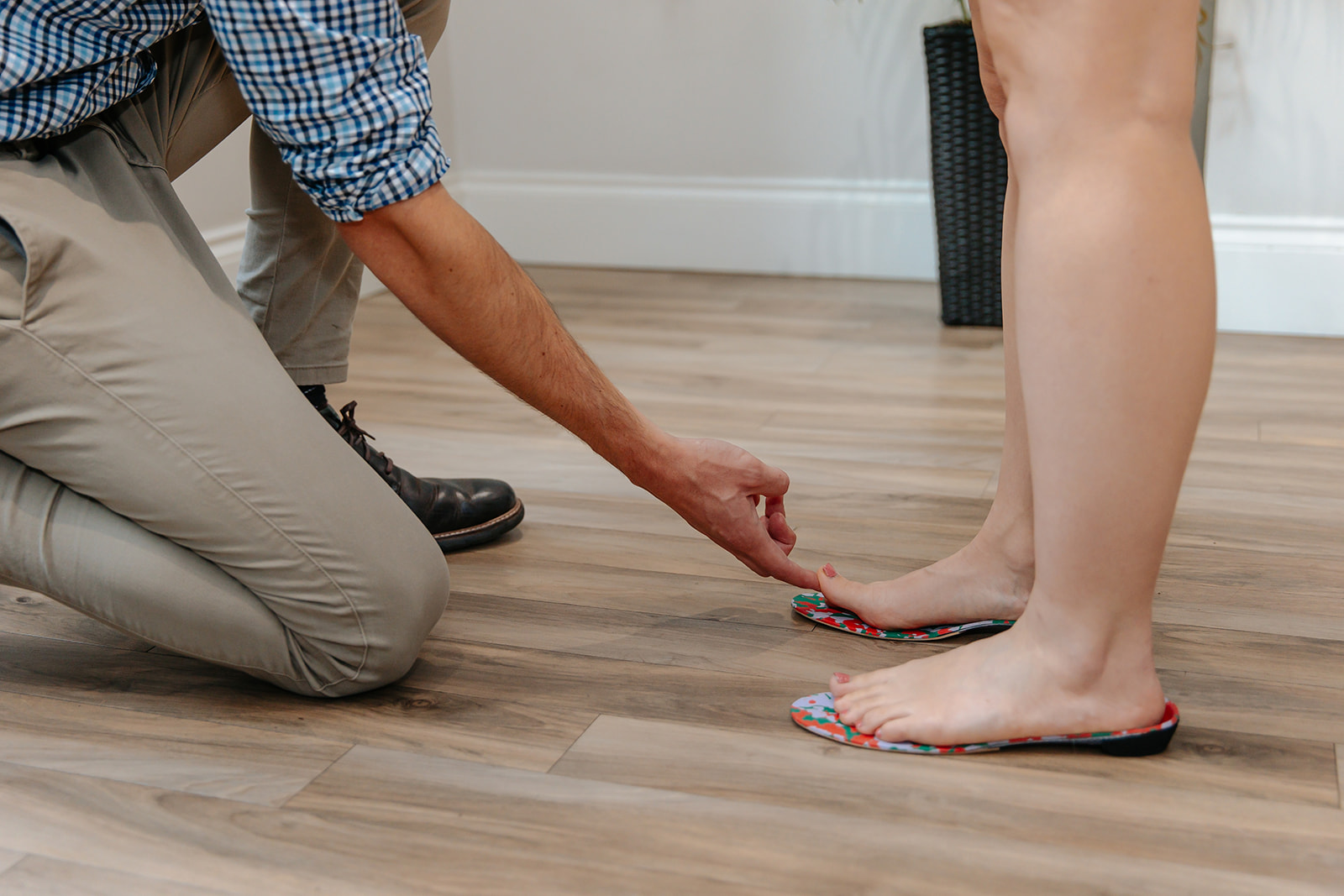Steph Hatt
March 22, 2019
April 07, 2017

Shin splints is the term used to describe pain along the inner edge of the shin bone usually caused by repeated trauma to the area. Common amongst runners, footballers, and rugby players, find out more about this condition, its causes, symptoms, and how we can help.
Shin splints are medically known as medial tibial stress syndrome (MTSS) due to the anatomical location of pain which is located along the inside of the shin starting approximately 5cm above the ankle and extending up to one-third of the shin bone. It often presents as a deep bruise-type pain.
It is a specific overuse injury-producing pain in activities such as running. Shin splints are more common in females than males with a 4:1 ratio but are still prevalent in men.
Shin splints typically present themselves as a deep bruise or aching pain. It is often present at the start of running which subsides after a few minutes but then can return towards the end of a run due to fatigue and a change in running biomechanics. It can also be painful first thing in the morning the day after a run. Normally, day-to-day function and walking is unhindered, but shin splints can progress if left untreated. If you experience pain during walking it may suggest a more severe bone injury such as a stress fracture.
Historically there have been several popular theories on the causes of shin splints, however, the most recent research findings suggest it is a bone stress injury and is believed to be linked to an increase in bending stress placed on the bone. The bending stress on the bone is greatest at the lower shin and this can be exacerbated due to abnormal biomechanics. There are many reasons why a person may have abnormal biomechanics which may include:
Many different options are available to treat shin splints and these will depend upon your circumstances. At your Gait Analysis appointment, our biomechanics Podiatrist will determine the cause of your shin splints and recommend a treatment plan that is bespoke to you. This could include:
Orthotics: Custom orthotics or insoles are one of the most effective treatments for shin splints. Orthotics are suitable for people of all ages and because they are bespoke to your foot, offer the exact support required to aid your foot’s normal function and relieve the cause of your shin splints.
Running Analysis: As shin splints is nearly always linked to running we provide specific running gait analysis to look at your technique which may highlight abnormality or technique issues which can then be worked on via various methods.
Shockwave Therapy: This is an excellent treatment option for chronic or resistant cases and helps increase your healing capacity. Shockwave therapy works best alongside other treatments listed here.
Physiotherapy: You may also see one of our team of Physiotherapists for manual therapy and an individually prescribed exercise programme to help build strength in weak muscles that could be contributing to your shin splints.
Massage: If your shin splints is due to tight leg muscles, our massage therapists can help to ease the tension which provides effective relief of symptoms.